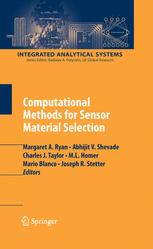

Most ebook files are in PDF format, so you can easily read them using various software such as Foxit Reader or directly on the Google Chrome browser.
Some ebook files are released by publishers in other formats such as .awz, .mobi, .epub, .fb2, etc. You may need to install specific software to read these formats on mobile/PC, such as Calibre.
Please read the tutorial at this link: https://ebookbell.com/faq
We offer FREE conversion to the popular formats you request; however, this may take some time. Therefore, right after payment, please email us, and we will try to provide the service as quickly as possible.
For some exceptional file formats or broken links (if any), please refrain from opening any disputes. Instead, email us first, and we will try to assist within a maximum of 6 hours.
EbookBell Team

0.0
0 reviewsIn Computational Methods for Sensor Material Selection, experts discuss the design and selection of active sensing surfaces for chemical sensors, particularly sensors used in vapor sensing arrays or electronic noses.
Part I covers first principles.
Part II focuses on identifying and evaluating candidate sensing materials and covers such topics as calculations of sensor-analyte interactions, statistical and semi-empirical methods based on characteristics of sensing material and analyte, and new experimental methods.
Part III advises on selecting materials for inclusion in arrays by use of statistical methods and algorithm-based methods for evaluating the array response to target analytes.
This book will appeal to researchers in academia and industry involved in chemical vapor sensing and monitoring. Also, it will be of special interest to those who are developing devices based on chemical sensing arrays.